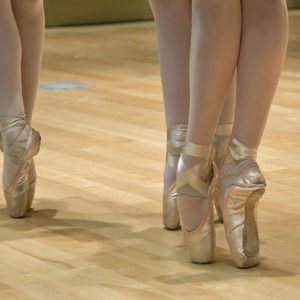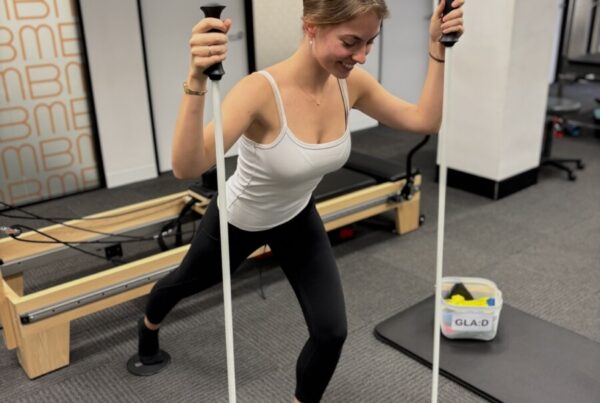Lisfranc injuries are notoriously difficult! They are often missed during diagnosis and can have a very slow recovery time.
Alice, one of our lovely physios, has written a blog previously describing in detail what a Lisfranc injury is. This blog will go over what a ‘typical’ rehabilitation program would like for someone who has undergone surgery.
As mentioned in our previous blog, a Lisfranc injury involves the Lisfranc ligament that attaches the second metatarsal to the medial cuneiform within the mid-foot. The severity of this can vary greatly from a mild sprain to full fracture dislocation. A Lisfranc injury is often caused by a direct injury, such as a car accident or fall, or indirectly where the foot in placed in dorsiflexion then rotated. For example, during a soccer games where a player is on their toes and suddenly twists.
Once a Lisfranc injury is diagnosed (typically by a weight-bearing x-ray) it will be determined whether the injury is stable or unstable. Stable Lisfranc injuries are often less severe and have no fractures or non-displaced fractures. These injuries are often managed conservatively within a boot. Unstable Lisfranc injuries result in displacement of some or all of the tarsometatarsal joints with associated ligament rupture and/or significant fractures. Unstable injures are commonly managed operatively where the bones are fixed with screws, pins, or k-wire to allow for the injury to heal in a stable position. Fusion of this joint is also another operative management option.
Below is an example for a Physiotherapy rehabilitation programme for a Lisfranc Injury following surgery. Each individual should be given a rehab protocol which may vary depending on their specialist and/or severity of injury.
- Non weight-bearing in a cast or CAM boot.
- Swelling and pain management.
- Maintenance of strength proximally, i.e. hip, core and upper body strength.
Week 6/8 to 12:
- Commence weight-bearing while still wearing CAM boot.
- Non weight-bearing ankle mobility exercises.
- Gait retraining in CAM boot.
- Regain ankle range of motion.
- Commence gentle isometric (static) ankle strengthening exercises.
3 months to 6 months:
- At 3-4 months the specialist may decide to remove any metalwork. This is usually if the metal is causing pain or movement restriction.
- Wean CAM boot. Good supportive shoes are essential in maintaining adequate arch support. A temporary orthotic may also be indicated.
- Progressively load foot and ankle – for example start pool walking then progress to land based exercises.
- Proprioception/balance raining and intrinsic muscle strengthening.
- Achieve normal gait (walking pattern).
- Non-impact cardiovascular training – for example exercise bike or swimming.
6 months to 12 months:
- Continue to load foot and ankle within pain limits. Commence hopping and jumping.
- Once controlled and stable landing is achieved, commence jogging.
- Commence sport specific skills and drills.
- Have an assessment for readiness to return to sport. Often return to sport takes at least 11 months post surgery, however this varies between individuals and their specific sporting requirements.
If you have any questions regarding Lisfranc injuries or other foot conditions please contact us here at Bend + Mend in Sydney’s CBD! Foot injuries can be difficult but we love a challenge.







Dear Sir/Madam,
My lisfranc fracture happened on 11th october2019. Admitted to hospital and surgery done on 13th october2019 .Sir doctor have removed back slab from leg .
Sir from when i can start weight bearing on that leg ?
And what exercise to be followed ?
Please guide…..
Hello Dheeraj,
Thank you for your comment. Your exact management following surgery will depend on the extent of the injury however it is common to go into a weight-bearing boot after the non-weight bearing period has ended which may be around 6-8 weeks post-op, keeping in mind if your surgery was more extensive your surgeon may need to work to a different time-frame. While in the boot you can usually do a limited programme of foot and ankle exercises when the boot is off (again depending on your surgeons recommendation) and also some exercises to maintain the strength of your leg with the boot on.
The blog above is an outline of a common post-op regime. I would recommend seeing a Physio for the type of exercises as they are prescribed and adapted for each person depending on their circumstances.
Here is a link to another blog on this topic which might help as well.
https://bendandmend.com.au/news/physiotherapy/lisfranc-injury/
Kind regards,
Kellie
Good afternoon
Please can you advise me if I’m doing the right thing as I broke my foot on 14th Oct. I had lisfranc surgery on 17th October. I spent 2 months in a firbre glass cast and then that was removed and I was given a cam boot. Now I’m to do weight bearing with the boot on.. I have to wear the boot for a further 6 weeks. The fracture clinic sent me to the physiotherapist but he said there is nothing I can do except for gentle foot exercises which he gave me on a sheet of paper. He says I have to wait until the boot is taken off after 6 weeks to go for actual physio sessions. Is that correct? Im 71 years old and love walking so I’m very anxious that I won’t be able to walk properly again. Please advise. Many thanks Lyn
Hello Lyn,
Thank you for your comment and I am sorry to hear about your broken foot. It sounds like you are on track now that you are weight-bearing with the boot on. As for Physiotherapy, our goals would be to make sure you are walking well in the boot with your gait as normal as possible, completing the exercises you were given to keep ensuring you retain your ankle mobility and also maintain the strength of the rest of your leg which may involve some additional exercises. Of course this all needs to be done with minimal pain. If in doubt it is always good to touch base with a Physio so they can see how you are getting along, even if just for one session.
Kind regards,
Kellie
Hello there,
I was injured on 30 Dec. 2019 and operated on 13 Jan. 2020. ORIF with a plate and three screws to stablize my foot. I was in a cast for 4 weeks next 4 weeks with no cast and advised to exercise Plantarflexion, inversion and eversion and alphabets and scar tissue massage . At the end of 8 weeks was given an air cast boot with custom arch support to start weight bearing gradually. I was putting 10 kgs for first 10 days, then 20 -25 kgs next 10 days and graduated to putting 30-35 kgs weight on the injured foot while wearing the aircast with arch support and assistance of walker. Now with COVID19 can not go to hospital for next appointment. I have started to bear full weight in the aircast with arch support. Can you suggest if that is what I should be doing? I experience ankle and knee pain while walking without any assistance. Which PT exercises do you recommend?
Hi Nishi,
Thank you for your question. A Lisfranc repair is a complex procedure and I imagine you have followed a protocol from your specialist thus far.
As they are all slightly different repairs and present in different ways it is difficult to give the right exercise at a certain point. Exercise prescription is based on a number of factors. Usually your surgeon has a protocol or exercise program to follow, this is performed in conjunction with pain tolerance, exercise tolerance and the complexity of your repair.
If you would like some guidance on exercises I would suggest either coming into the clinic for a consult, or if this is not possible a Telehealth consult (video call) might be better suited. I can take a look at how you are walking and your range of motion and then we can go from there.
It is a complex injury and the rehabilitation process requires a bit of guidance. I find them very interesting!
Please reach out if I can help further, it would be my pleasure!
Regards,
Campbell Hooker
Physiotherapist
Hello,
Iv recently had linsfranc surgery about 4 weeks ago now, I had metal plates put in the foot, I had a soft plaster cast on and I was in severe pain, agonising pain.
My foot couldn’t handle the compression of it so I had to get it removed. My ankle is still swelled iv been elevating it alot and limited walking around the house, I am on crutches and a big black boot as I still can’t weight bare. I get very still in the rest of my body kneews hips.
My foot looks darker then my other foot more wrinkled and still pains me. My biggest worry is when I try move my toes there isn’t much movement I find it very hard and I get really really bad pain down my foot when I try, I just get so nervous I’ll never be able to walk on it again.
I’m currently living in Ireland, in December my plan is to move to Sydney and also worry if I won’t be able to go for then.
I’d appreciate your reply on some advice.
Thank you,
Becky
Hi Becky,
Sorry to hear that you have had such a hard time after lisfranc surgery. In this instance I would highly recommend you flag these ongoing symptoms with the surgeon if you have not done this yet. What you are describing may not be the usual post-op course of recovery they are expecting and they may want to take a close look at the foot. It is still only 4 weeks post-op however, so you would not yet expect a full recovery. It’s normal to have some pain and stiffness, and even swelling still four weeks after the operation until you are out of the boot and have started your rehab exercises which will then get the joints and muscles moving more and help the stiffness. I would have a Physiotherapist conduct an assessment in person as well as to make sure there are no other issues but more so to help you start rehab in a safe and effective way.
Kind regards,
Kellie